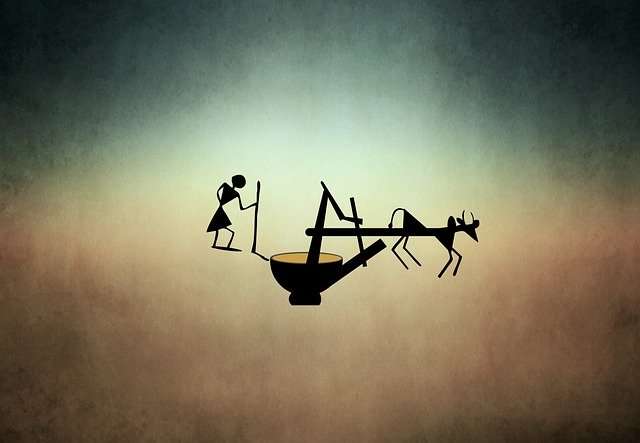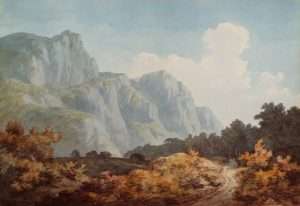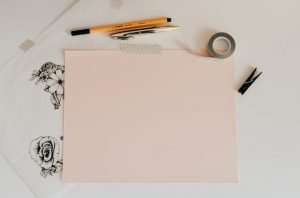Remember, this is supposed to be fun. So don’t get frustrated. And don’t worry if you don’t get it at first. Try, try again. You will see improvement with practice.
Here are some basic tips on mixing colors with watercolor:
The idea is to use a combination of transparent and opaque paint to create a variety of effects. This can be as simple as mixing different colored transparent watercolors on your palette to make new colors, or painting wet-into-wet with flowing washes. It can also be more complicated such as glazing and scumbling, which are techniques for layering opaque paint over dry color.
When you need to make a darker color, don’t just add black paint to your existing color; instead, add some watercolor that is close to the value of the dark you want. This will soften the color and will give you much more control over the final result. If you add black paint directly to your existing color, you won’t be able to adjust it as easily later.
By using transparent watercolor paints, you’ll be able to create a large range of values and colors. This is an important part of being able to create believable paintings.
Mixing with Water
Watercolor paints dry lighter than they appear when wet—this is called “lightening” in the jargon of watercolor painting. This means that if you apply two layers of color on top of one another that are different light values, the top layer is likely to appear darker than both
Watercolor is a medium for artists to paint with water-soluble pigments. The medium is also called “water media”. Watercolor uses the inherent water-solubility of water-based pigments to produce rich, dense, and sometimes transparent or translucent washes of color.
TIP: For best results when painting with watercolors, it is very important to use a large amount of paint and a small amount of water on your brush. This will give you the most vivid colors and allow for more control when painting.
To mix colors with watercolor, start with three basic colors: a warm color, such as yellow ochre; a cool color, such as ultramarine blue; and a neutral color like ivory black. From these three colors you can mix thousands of others by adding varying amounts of each other. To make a green color, mix yellow ochre and ultramarine blue; if you want something brighter, add more yellow ochre. If you want it darker, add more blue.
For even more control over your colors, mix your own palette of colors before you start painting. Keep in mind that some colors will look different when mixed with others than they do on their own–just like mixing paints together
Watercolor is a transparent medium. The color of the paper on which you paint affects the outcome, as does the support itself. For instance, it can be white, beige or dark brown. The transparent nature of watercolor means that the color of your paper will show through and create an optical mixing effect.
The Size Of Your Brush Matters
Watercolor brushes come in a variety of sizes, from
Watercolor is an extremely versatile medium, allowing you to create a wide range of effects. However, it does not always lend itself to the same level of control as other media, for instance oil paints or pastels. If you are new to the medium and want to paint a realistic picture, here are some tips from professional artists that may help you get started.
First of all, if you are using watercolors in a painting, it’s very important that your paper be archival quality, which means acid-free. This will ensure that your artwork does not yellow with age. Always choose paper that is good for wet media such as watercolor or acrylics. If the paper is not designated for this purpose, it could easily warp or tear when you paint on it.
The size of your paper will determine how large your painting can be. For instance, if you have a sheet of 9″ x 12″ paper, then if you have an image that you want to be 6″ x 8″, then the largest size would be 4″ x 6″. Always make sure that your image fits within the confines of your paper so that there will be no unsightly borders visible in your finished product.
Make sure that all of your equipment is completely dry
Mixing watercolor and pigment is one of the most important skills for a watercolor painter to master. It is also one of the hardest things to teach, because it is something that must be learned through experimentation and practice.
Since you have purchased a book on mixing watercolors, you are obviously taking this skill seriously. I will give you some tips, but ultimately the only way to consolidate your learning is to practice with different types and brands of pigments. One brand may work better for you than another, depending upon the type of paper you are using, the kind of light in your studio, etc. You may also discover that you prefer working with tubes or pans or both.
First, let’s talk about pigment and its characteristics. Pigment comes in two basic forms: dry and wet. The difference between these two forms has to do with how they are made. Dry pigments are made of fine ground minerals–earth colored minerals such as ochers (natural yellow, reds and browns), siennas (natural browns), umbers (deep browns), burnt sienna (brownish red) and raw umber (a dark grayish brown). These can be mixed with water or solvent such as turpentine to create paint that
If you have a solid understanding of the qualities of complementary colors and how to mix them, you’ll be able to create any color under the sun with a simple palette, along with some water and a little ingenuity.



